Transferts monétaires et mobilité humaine
Les transferts monétaires sont souvent utilisés lors de crises afin de répondre aux besoins des personnes migrantes. Dans cette page, vous trouverez des ressources sur les transferts monétaires et la migration.

La Croix-Rouge se prépare à fournir une aide humanitaire aux migrant·es de la caravane sur le point de quitter le Honduras pour le Guatemala.
©Johannes Chinchilla / FICR.
Conflits, crises économiques et catastrophes sont autant de raisons ayant contraint des personnes à fuir et à traverser des frontières dans des conditions éprouvantes et risquées, en quête de sécurité et de moyens de subsistance. En 2020, le nombre de personnes déplacées de force s’est envolé au niveau sans précédent de plus de 80 millions de personnes, soit près du double du nombre enregistré il y a une dizaine d’année. Cette tendance s’aggrave et les effets du changement climatique menacent de déplacer jusqu’à 200 millions de personnes d’ici 2050.
L’assistance monétaire est de plus en plus utilisée afin de répondre aux besoins des personnes en situation de déplacement. On y a eu recours à grande échelle dans différents contextes de migration, en Europe en 2015 jusqu’au Venezuela pour « los caminantes ». Elle a également été utilisée dans d’autres crises migratoires, notamment en Amérique centrale, au Sahel, en Méditerranée et dans la Corne de l’Afrique. L’assistance monétaire est à l’heure actuelle l’une des principales formes d’aide apportée aux populations déplacées en Ukraine et dans les pays voisins.
Il existe une myriade de perspectives et de définitions concernant le mot « migrant·e » et la façon dont les humanitaires doivent agir. C’est pourquoi nous ne choisissons pas une définition unique pour le moment, étant donné que les discussions sur l’assistance monétaire et la migration en sont encore à leurs prémices et que le langage évolue encore.
Documenter et partager les données probantes donnera lieu à des interventions plus efficaces. Cette page contient une sélection de ressources utiles concernant la migration et le recours à l’assistance monétaire. Elle sera mise à jour au fil des discussions ayant lieu dans les espaces humanitaires des transferts monétaires.
Priorités actuelles
Afin de contribuer aux progrès relatifs à cet enjeu, nous nous engageons à :
- soutenir la création de données probantes aux niveaux régional et mondial ;
- contribuer aux solutions pratiques visant à mettre en œuvre les transferts monétaires auprès des personnes migrantes ;
- organiser des discussions sur les enjeux majeurs basées sur des données probantes.
Contenu récent
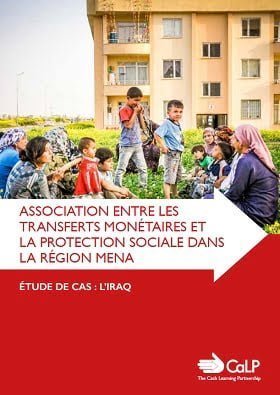
Association entre les transferts monétaires et la protection sociale dans la région MENA – Étude de cas : l’Iraq
Rapport
L’association entre les transferts monétaires humanitaires et la protection sociale est devenue un sujet de plus en plus important au cours des cinq dernières années, et la région Moyen-Orient et Afrique du Nord (MENA) est au coeur même de cette évolution.
Objectif : S’assurer que les...

Association entre les transferts monétaires et la protection sociale dans la région MENA – Étude de cas : le Liban
Rapport
L’association entre les transferts monétaires humanitaires et la protection sociale est devenue un sujet de plus en plus important au cours des cinq dernières années, et la région Moyen-Orient et Afrique du Nord (MENA) est au coeur même de cette évolution.
Objectif : S’assurer que les...

Responding to the COVID-19 Crisis: Linking humanitarian Cash and Social Protection in practise
Report
This paper seeks to demonstrate practical ways in which NGOs are linking their humanitarian work to social protection and the added importance of this in the context of COVID-19, following from the earlier work of CCD outlining the role of NGOs to
improve the access to and delivery of social protection in...

Webinar: Lecciones aprendidas en la provisión de transferencias monetarias en Colombia y Ecuador en respuesta a la crisis de Venezuela
Webinar
Nos complace invitarle a asistir al webinar para el lanzamiento del resumen ejecutivo del informe de hallazgos sobre el análisis de las lecciones aprendidas en la provisión de transferencias monetarias en Colombia y Ecuador en respuesta a la crisis de Venezuela. Este evento es organizado conjuntamente...

Cash and Voucher Assistance and Risk: Perception vs Reality Grand Bargain Cash Workstream Annual Virtual Meeting
Webinar
You are invited to a webinar hosted by the CALP Network and WFP under the Grand Bargain cash workstream annual virtual meeting umbrella. Is cash assistance riskier than in-kind? All the evidence says no, but we still act as if it is. Join us for this important conversation diving into the world of CVA and...

The State of the World’s Cash 2020: Global Launch Webinar
Webinar recording
The slides and recording from the launch webinar are now available to view and download.

Kenya Cash Working Group Achievements | JULY 2020
Report
The Kenya Cash Working Group’s (KCWG) operational information map (4 Ws) shows the various CVA actors’ coverage as of June 2020. Those actors are responding to different emergencies in Kenya including Rapid-Onset flooding, Desert locust invasion and COVID-19 pandemic funded by various donors.
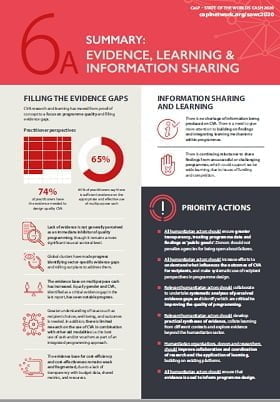
State of the World’s Cash 2020 – Chapter 6A summary: Evidence, learning & information sharing
Report
Three-quarters of practitioners agree that they have the evidence needed to design quality CVA. However some critical evidence gaps remain for example around recipient choice and wellbeing, cost effectiveness and the use of CVA in combination with other aid modalities. This chapter asks: ‘How can...
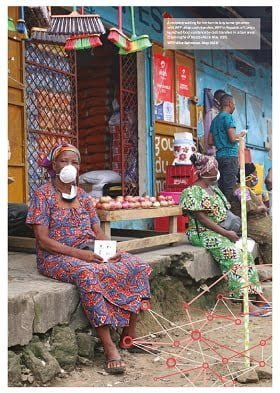
State of the World’s Cash 2020 – Chapter 9: COVID-19 and CVA – Impacts and Implications of the Crisis and Response
Report
CVA is being scaled up significantly in response to COVID-19, but the overall gap between needs and funding is growing rapidly. The pandemic has incurred an extraordinary human cost, but also presents an opportunity to redefine the humanitarian system to better serve the needs of crisis-affected people....
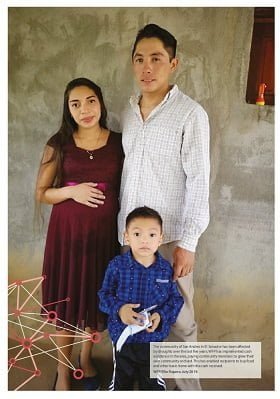
State of the World’s Cash 2020 – Chapter 8: Linkages between SP and CVA
Report
Longstanding efforts to strengthen links between humanitarian CVA and social protection have been accelerated by the COVID-19 pandemic, with significant progress since the last report. CVA should aim to complement robust social protection systems where they exist and contribute to their strengthening...

State of the World’s Cash 2020 Chapter 1 Summary: Funding, Policies, Volume and Collaboration
Report
In the past four years, the global volume of CVA has doubled and in 2019 accounted for 17.9% of international humanitarian assistance. Tracking of CVA volume data is improving and 91% of practitioners perceive that support from donors has increased. This chapter asks: ‘As the global volume of CVA...

Cash and Voucher Assistance and Risk: Perception vs Reality Grand Bargain Cash Workstream Annual Virtual Meeting
Webinar recording
Webinar hosted by the CALP Network and WFP under the Grand Bargain cash workstream annual virtual meeting umbrella.
Is cash assistance riskier than in-kind? All the evidence says no, but we still act as if it is.
During the Covid-19 pandemic CVA has been the modality of choice in humanitarian responses....

The State of the World’s Cash 2020 Report: Global Launch
Webinar
This 90-minute webinar and Q&A will launch The State of the World’s Cash 2020 Report, present a complete picture of the state of CVA in 2020, and explore how we can all work together to better meet the needs of crisis affected people. The State of the World’s Cash 2020 draws on inputs from hundreds of...
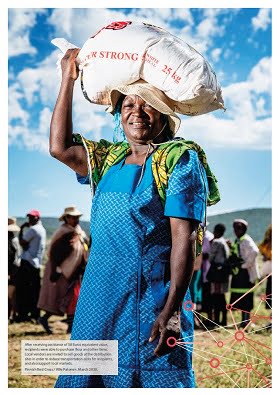
State of the World’s Cash 2020 – Chapter 2: Mainstreaming CVA – Progress; Risks and Challenges
Report
CVA is an increasingly common and well-understood tool in humanitarian response – 85% of practitioners perceive that there has been more systematic consideration of CVA over the last 2 years.This chapter asks: ‘How can ambitions for scaling up CVA be met whilst also pushing for better, more...
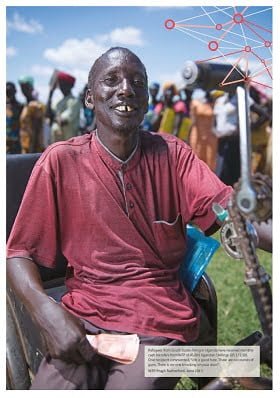
State of the World’s Cash 2020 – Chapter 3: Quality Programming
Report
67% of practitioners report that the quality of CVA has increased in the last two years. The focus for improving CVA has gradually shifted from increased scale, to improved quality and more recently towards quality as defined by outcomes for recipients. This chapter asks: ‘How can we continue to...
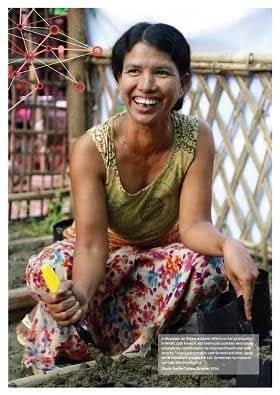
State of the World’s Cash 2020 – Chapter 1: Funding, policies, volume, and collaboration
Report
In the past four years the global volume of CVA has doubled and in 2019 accounted for 17.9% of international humanitarian assistance. Tracking of CVA volume data is improving and 91% of practitioners perceive that support from donors has increased. This chapter asks: ‘As the global volume of CVA...
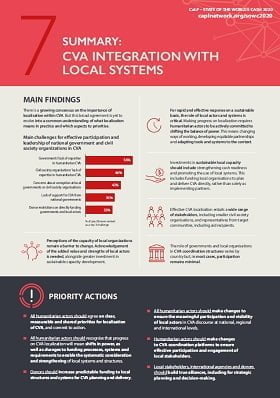
State of the World’s Cash 2020 Chapter 7 summary: CVA integration with local systems
Report
For a relevant and sustainable response , the role of local actors and local systems is critical. There is a growing consensus regarding the importance of localisation within CVA, but little clarity on how to drive this forward in practice. Progress on localisation requires humanitarian actors to be...

State of the World’s Cash 2020 – Chapter 6A: Evidence, Learning & Information Sharing
Report
Three-quarters of practitioners agree that they have the evidence needed to design quality CVA. However some critical evidence gaps remain for example around recipient choice and wellbeing, cost effectiveness and the use of CVA in combination with other aid modalities. This chapter asks: ‘How can...
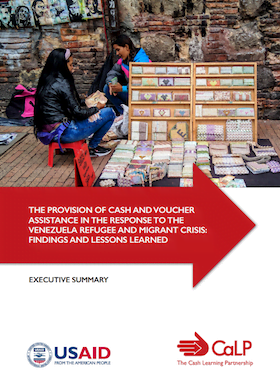
The Provision of Cash and Voucher Assistance in the Response to the Venezuela Refugee and Migrant Crisis: Findings and lessons learned, Executive summary
Report
This study, for which data was compiled between March and April 2020, seeks to document lessons and good practices in the delivery of CVA in Ecuador and Colombia by humanitarian organisations and governments, in response to migrants and refugees from Venezuela. The purpose of this analysis is...
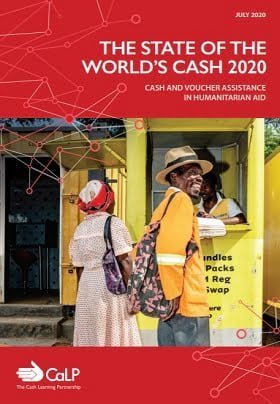
The State of the World’s Cash 2020 – Full report
Report
Since the first State of the World’s Cash report we have seen huge developments in cash and voucher assistance (CVA), with a continued increase in scale driving changing roles and partnerships, and a growing emphasis on quality. This new report, State of the World’s Cash 2020, examines progress,...